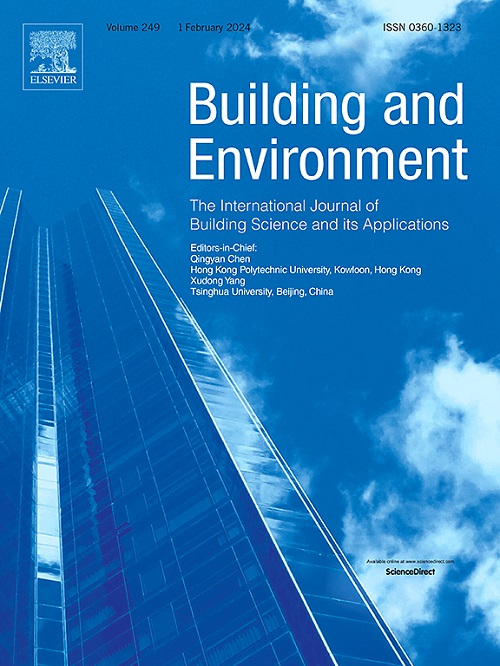Effectiveness of horizontal air curtains in reducing buoyancy-driven heat flux: Insights from small-scale saltwater experiments
IF 7.1
1区 工程技术
Q1 CONSTRUCTION & BUILDING TECHNOLOGY
引用次数: 0
Abstract
Horizontal density stratification between climatically distinct environments results in buoyancy-driven flow through doorways, which significantly impacts building energy efficiency and controlled indoor environments. Horizontal air curtains, with jet flow paths along the doorway width, offer the potential to better match vertical thermal pressure distributions. This study investigated the effectiveness of such air curtains in reducing buoyancy-driven exchange flow using small-scale saltwater experiments. Particle image velocimetry and dye visualization techniques were used to examine the interactions between buoyancy-driven flow and plane jets. Results indicate that the top and bottom of the doorway, where the buoyancy-driven flow is more intense, require greater attention in the design of horizontal air curtains. Increasing the discharge velocity of the jet enhances the sealing structure formed, but intensifies shear generation and turbulent dissipation. Separation efficiency initially increases and subsequently stabilizes with the increase in discharge velocity. The deflection of the jet trajectory due to the horizontal density stratification can be effectively compensated by adjusting the discharge angles of the upper and lower segments. Recirculating horizontal air curtains can achieve a separation efficiency of up to 79 % with optimal segment parameters. A novel deflection modulus is proposed for horizontal air curtains. The negative power relationship between the Stanton number Stm and the deflection modulus Dmh provides a predictive framework for separation performance. These findings offer an experimental foundation for optimizing horizontal air curtains in scenarios involving horizontal density stratification, indicating their potential to improve building energy efficiency.
求助全文
约1分钟内获得全文
求助全文
来源期刊

Building and Environment
工程技术-工程:环境
CiteScore
12.50
自引率
23.00%
发文量
1130
审稿时长
27 days
期刊介绍:
Building and Environment, an international journal, is dedicated to publishing original research papers, comprehensive review articles, editorials, and short communications in the fields of building science, urban physics, and human interaction with the indoor and outdoor built environment. The journal emphasizes innovative technologies and knowledge verified through measurement and analysis. It covers environmental performance across various spatial scales, from cities and communities to buildings and systems, fostering collaborative, multi-disciplinary research with broader significance.
 求助内容:
求助内容: 应助结果提醒方式:
应助结果提醒方式:


